(this is a guest post by tenox)
So here it is, Atari ST Emulator written in JavaScript and running in your browser. Note, this is JavaScript, not Java!

(this is a guest post by tenox)
So here it is, Atari ST Emulator written in JavaScript and running in your browser. Note, this is JavaScript, not Java!
(Note this is a guest post by tenox)
I’ve just learned that after long an uncertain life under AOL, Winamp and SHOUTcast has been acquired by Radionomy. You can download it here. Long live Winamp!
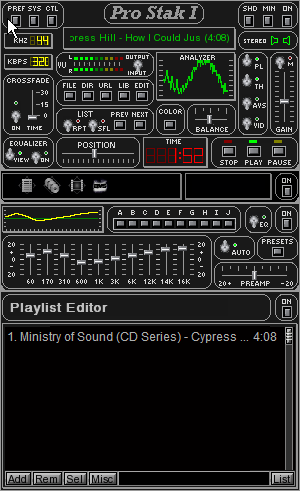 (sorry I couldn’t stop myself but this IS my favorite skin 🙂
(sorry I couldn’t stop myself but this IS my favorite skin 🙂
(note this is a guest post from Tenox)
WRP is a HTTP proxy service that renders web pages in to GIF images associated with a clickable imagemap of the original web links. It basically allows to use historical and obsolete web browsers on the modern web.
See a gallery of today’s news sites. All links are clickable!
For more background information and screenshots you can see my previous post on the matter.
There are two versions. Cocoa-webkit for Mac OS X and QT-Webkit for Linux/BSD/etc. The script can be downloaded here.
(note this is a guest post by Tenox)
[Update: A full HTTP Proxy version has been made in this post.]
I spend a fair amount of time working with legacy operating systems. Apart from being obsolete themselves they suffer from a common problem – the web browsers are simply unusable on a present day Internet. You start by getting JavaScript error on google.com and it only gets worse once you go further. Try going to microsoft.com with IE 1.5 or qnx.com with the last version of Voyager. This just doesn’t work. With rapid progression of web standards, the situation will only be getting worse in time. Something had to be done.
Quite a while ago I’ve came across Opera rendering proxy for mobile browsers. This got me thinking. If you could render a web page on a proxy server to a simplified HTML, say 3.x., this would make a lot of web browsers happy! Also, for some unrelated purposes I have been using webkit2png which allows to create a whole web page snapshot in a single png image. What if such image had an image map of clickable regions pointing to the original links?
The idea was born, but was it possible to implement and would it work? Webkit2png was quite far from having all the required functionality. Fortunately, though after some additional research I have stumbled upon picidae network. To my utter surprise they actually made all or even more functionality that I wanted in their picidae.py script. All that had to be done to adapt picidae to my purpose was to save the image as a GIF image, generate a simple HTML page with imagemap, an input box and strip all the unwanted stuff.
Webrender.py came to life. It’s a cgi-bin application that resides on a machine in the middle. It renders a gif image and spits it out to the browser together with a simple web page, containing a URL and search input boxes plus the gif and image map.
After some initial debugging and massaging out few bugs the solution worked perfectly! I could finally get the old browsers happily navigate modern websites! Check out some examples:
Yes! You can finally browse microsoft.com with IE 1.5 🙂
Or go to netscape.com in Netscape 4.x browser. This was impossible just a few hours ago!
How about some other browsers:
Enjoy!
Update: A full HTTP Proxy version has been made in this post.
(this is a guest post by Tenox)
Jason’s post on VMware reminded me of something that I wanted to post a while back. Not widely known, both VMware and Microsoft offer free and available to anyone, virtualized “hands on labs” on some or most of their products. Don’t think of them as videos or scripted presentations. They are in fact real virtual machines with real software you can play with. VMware HOLs for instance include putty.exe that allows you to SSH to the ESXi host to hack it.
If you don’t want to spend hours installing and configuring all this stuff and just want to learn the essence or gain some experience with enterprise technologies without breaking a bank I highly suggest to check them out. Also VMware labs let you preview upcoming technologies which are not yet available on the market!
VMware HOLs: http://labs.hol.vmware.com/ there also is a community page.
Microsoft, TechEd 2013 HOLs:Â Â http://channel9.msdn.com/Events/TechEd/NorthAmerica/2013?y=Hands-on+Lab&t=available-online (I think you need Internet Explorer to launch them)
Enjoy!
(note this is a guest post from tenox)
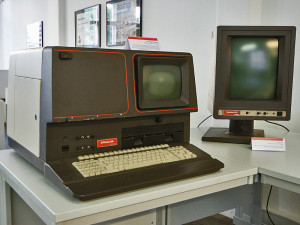 A long long ago, my father had a printing business. An emerging technology called Desktop Publishing (DTP) was just taking to the mainstream. I have been involved in migration from Linotronic typesetting machines (see above) to more modern and GUI driven Atari TT with Calamus. Those were fun times. Long story short, I became an avid fan of Atari. Unfortunately as time progressed, Ataris got in turn obsoleted by Macs with Quark Xpress and Photoshop. I myself started exploring world of Unix and ended up selling my Atari to be able to run Linux. Bit of shame from time perspective as there were plenty of Unix flavors for the Atari: Minix, Linux, NetBSD and MiNT. Unfortunately they were released after I parted with the platform.
A long long ago, my father had a printing business. An emerging technology called Desktop Publishing (DTP) was just taking to the mainstream. I have been involved in migration from Linotronic typesetting machines (see above) to more modern and GUI driven Atari TT with Calamus. Those were fun times. Long story short, I became an avid fan of Atari. Unfortunately as time progressed, Ataris got in turn obsoleted by Macs with Quark Xpress and Photoshop. I myself started exploring world of Unix and ended up selling my Atari to be able to run Linux. Bit of shame from time perspective as there were plenty of Unix flavors for the Atari: Minix, Linux, NetBSD and MiNT. Unfortunately they were released after I parted with the platform.
Fast forward 20 years, Atari own UNIX version surfaced the earth. It was originally released in mid 1992 but died shortly after, no one ever heard about it. It has been lost to humanity. Only two good souls had working versions of the system and under pressure of the community finally made disk images of their installations. Some time after a documentation set has been found and digitized. Now I’m in process of trying to restore last existing set of damaged installation tapes. You can find little bit more history of the efforts on this thread.
Out of nostalgia and the fact that Atari TT has been designed as a Unix Workstation, but never got a chance to play with it in this role, I decided to purchase one for myself. I have turned to Best Electronics who is a local Atari dealer around the corner. They sell Ataris like brand new, assembled from spare or reconditioned parts. I paid a small fortune for it, but I got myself a brand spanking new Atari TT, factory sealed and smelling like new after 20 years. It was fitted with latest motherboard revision, TOS, 1.44 MB FDD, 4 MB ST RAM and 16 MB TT RAM.
I was told to just hook it up to a VGA monitor and viola, it will work. Which it did… except to my utter shock in a whopping resolution of 640×480. It looked absolutely horrible stretched on a 19″ LCD panel. I don’t have any pictures but it looked like this. For games maybe OK but not for Unix or any sensible applications.
Using TTs professionally in DTP I certainly didn’t remember them suffering in the resolution department. So what was I doing wrong? Aha! In the old days we used to use special high resolution VME graphic cards. So I went to search for one on eBay and Atari Forums. These obviously proven to be impossible to find… obviously. Additionally I learned that Atari UNIX does not support any of these as they required special TOS/NVDI drivers. In order to run ASV X11 with a decent resolution, one needs a special high resolution monitor called either TTM 194 or 195. These were “professional” 19″ monitors specifically for DTP work. They worked with the built-in graphics card in a special black and white mode at 1280×960, which is actually decent even in modern standards. In a fact we did have these monitors at the printing shop.
Unfortunately these are very old, bulky CRTs and weight 50 lbs. My wife would kill me if I brought one home and even if she didn’t I would hate having one of these on my desk. So why won’t the “TT High” mode work on a standard VGA LCD which normally supports 1280×1024? Well back in a day VGA standard didn’t support such resolutions and Atari had to make the monochrome monitors using ECL signal similar to old SUN/3 and HP monitors. Higher resolution modes were only added later by VESA BIOS extensions.
Researching the topic a lot of people were actually looking for an ECL to VGA signal converter but one did not exist. Some managed to use old EIZO CRTs with ECL support and with decent results, but still these are 50 lbs CRTs and I wanted to run ASV on a LCD panel. An adapter to convert ECL signal to a real VGA has actually been tried before but with rather awful results. Something had to be done!
TenoxVGA was born. And this will be covered in the next post… 😉
(this is a guest post from Tenox)
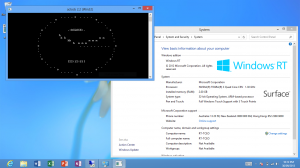 #197 – Aclock ARM Windows RT by Peter Godwin
#197 – Aclock ARM Windows RT by Peter Godwin
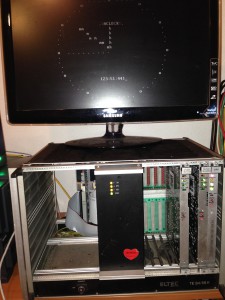 #198 – Alock M68K LynxOS by Plamen Mihaylov
#198 – Alock M68K LynxOS by Plamen Mihaylov
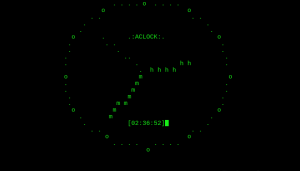 #199 – Aclock PDP11 DEMOS by Dima Naumov
#199 – Aclock PDP11 DEMOS by Dima Naumov
And long long long awaited…
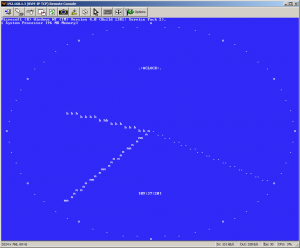 #200 – Aclock PowerPC WindowsNT HAL Driver by myself
#200 – Aclock PowerPC WindowsNT HAL Driver by myself
No cheating with numbers! Compiled and ran today on my ThinkPad 860. Just realized it’s #200. I think celebration with BSOD is in order! The screenshot was made using IP KVM. I will make an actual photo of the laptop screen another day.
Again thanks for everyone for contributions!
Last but not least there is a screenshot of previously cross compiled Aclock PowerPC OS/2 running on ThinkPad 850. Both the port and picture are courtesy of Michal Necasek of OS/2 Museum. Hope he won’t kill me for leaking the photo:
(note this is a guest post from Tenox)
Not long ago I have managed to purchase a working ThinkPad 850. This was no small achievement because in last 15 years I only scored 2 dead ones, for parts. As luck strikes twice, merely a week after 850 I’ve acquired the ultra uber and ultimate laptop of all – RS/6000 Notebook 860. Err what?
Technically 860 is a ThinkPad. However it was marketed for the business / RISC users, as a laptopized RS/6000 to run AIX, instead of oddball an ThinkPad with weirdo CPU that couldn’t even run Microsoft Office which was 850. In fact both the sales manual and product brochure do not even mention Windows NT or OS/2 at all. Smart move, but too little too late.
What are the differences? Most importantly compared to it’s younger brothers the laptop has a whooping 12″ display and massive resolution of 1024×768. This is actually not bad even in today’s standards, compared to my MacBook Air 11″. Having 860 and 850 aside the difference is massive.
Secondly the CPU is much faster running at 166 MHz vs 100 MHz for TP850. While 66 MHz in today’s standards is nothing, the actual difference is more than 50%.
That’s the good side. But there is the bad and ugly.
The laptop arrived with a rather nasty looking memory error:
I’ve tracked down the error in a support document, it translates to “Memory Error. Run memory tests”. So I did and memory passed just fine. What is going on?
So I’ve decided to ignore and try to install an OS. So happen I did have a handy Windows NT 4.0 CD and ARC floppy disk. I’ve went and installed ARC, but Windows NT wouldn’t boot and it was freezing during driver load. Nothing would help.
I have spent days trying to fix the problem. Tried replacing memory cards, running diagnostics, everything else. Because lower 32MB RAM is soldered on the motherboard I was just about to order a replacement one.
Then by a coincidence I’ve found this FAQ question … “ThinkPad 860 prompts for HAL diskette”, wait what? The answer has it – “860 support was planned for NT 4.0 PowerPC edition which never shipped. There is an unsupported HAL disk image here…”
Once HAL disk was loaded to Windows installer the system booted correctly. Note that the HAL disk also contains a video driver for the GT20 graphics card which is S3 M65 (86CM65):
It also turns out that once the hard disk was formatted and Windows NT was installed the memory error went away! Completely. I haven’t seen it since. I’m thinking it wasn’t a memory error but rather corrupted boot record or partition table.
Anyway here it is Windows NT 4.0 PowerPC:
I’m not going to go through Windows setup or ARC screens as they are covered elsewhere.
So the next step was to get the beast on to the net. Not an easy task to find a suitable NIC nowadays! Fortunately Windows NT CD has a HCL.HLP – Hardware Compatibility List. Browsing the help file I was able to filter out a handful of PCMCIA network cards with PowerPC support:
The last two are actually NE2000 compatible and use a common NE2K driver. Remembering some issues with the card I decided to go for a 3C859C from ebay instead. Later on I’ve found that the only supported PCMCIA LAN cards under AIX 4.1 are, surprise – IBM PCMCIA Ethernet Adapters. So I’ve got one of them on ebay as well.
The 3Com card worked flawlessly out of the box. Showed up in the PCMCIA control panel, driver installed automatically and I’ve got in on DHCP.
From there it was rather easy. First thing one needs is latest service pack and hotfixes. Unzip and wsftp32 also come handy. And then there is the text editor!
Finding a working web browser was a challenge again. The default IE1 wouldn’t even support HTTP/1.1. Mosaic is not much better. Fortunately Internet Explorer 3.01 saved the day!
Apart from that there is almost zero software available for download for Windows NT PowerPC. The only larger utility collection is Windows NT 4.0 Resource Kit which surprisingly has full support for PPC. There are also Dependency Walker, Psychedelic Screensaver, Winimage, PkZip, etc. If you have more software please send! I’m also porting some more.
On the hardware side interestingly Cygnus Supply has a very large stock of replacement parts for these laptops. If you have a broken one you can try your luck there. You could probably assemble a full laptop from the parts. Don’t be put of by “request a quote”. I used them many times before and they usually come up with reasonable prices for the parts. Make sure to have an exact IBM P/N. Also you can buy a “brand new” replacement battery. For failing hard drives a 2.5″ SCSI disk may be a problem. You can by a CF card adapter here.
Last but not least I’ve collected some links to sites with TP 8×0 stuff:
In the next part I will cover MSVC, SDK, DDK and some porting efforts I’ve been doing…
Updates:
(note this is a guest post from Tenox)
OMG this is how the heaven looks like:
Source: http://channel9.msdn.com/Series/CampusTours/Microsoft-Campus-Tours-Microsoft-Archives
(note this is a guest post from Tenox)
So that QNX 2.21 from the previously established purchase fund has arrived today. As an added bonus, I expected 4 x 5.25″ disks, but the media turned to be a single 3.5″ floppy disk. So it’s better suitable for more modern 286 machines and emulators.
I have imaged the floppy to a raw disk dump and booted in VMware Workstation for verification.
The floppy disk image was sent to those who contributed in the previous post.
Manuals are always available here.
Update: the floppy disk image is here…